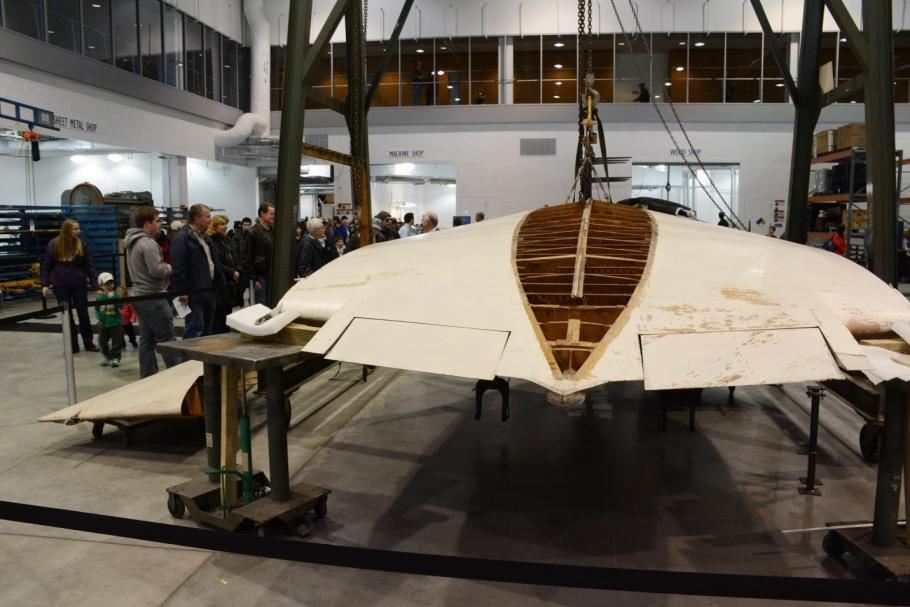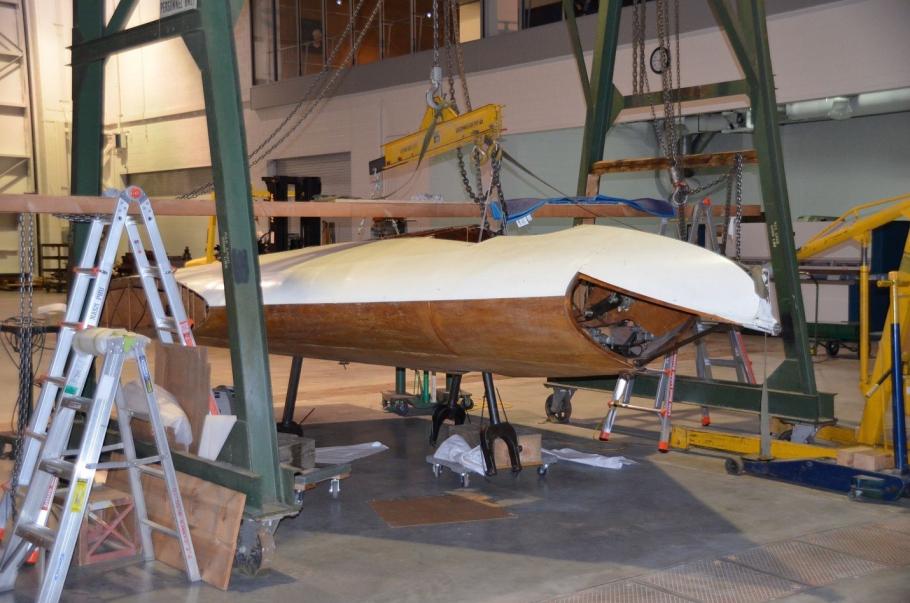In this four-part series, curators Russ Lee and Evelyn Crellin take an in-depth look at the Lippisch DM 1, an experimental German glider. At the conclusion of Part 3, the glider was tested in the National Advisory Committee for Aeronautics (NACA) Full-Scale Wind Tunnel. In this final post, Russ and Evelyn connect those early tests with the world's first delta wing aircraft.
We have found no written confirmation that Convair incorporated the NACA data from the DM 1 directly into their groundbreaking work to design and build the first jet-propelled delta wing aircraft. Yet it must be so. When the Convair XF-92A became the world’s first delta wing aircraft to fly on September 18, 1948, it marked the triumphant culmination to a project that started in September 1946. Convair's goal was to develop and evaluate the aerodynamic characteristics of the delta wing configuration by flight-testing an experimental prototype aircraft called the Model 7002. The Air Force renamed this aircraft the XF-92A in May 1949. Recall that NACA tested the DM 1 in the wind tunnel in April, June, August, and November of 1946. Interest in the DM 1 probably led to the visit that Convair Chief of Aerodynamics Ralph H. Shick made to DM 1 designer Alexander Lippisch in July 1946. In October, Lippisch and two other German scientists moved for a few weeks to Convair’s home airfield in San Diego. Convair had plenty of time to study the DM 1 wind tunnel data, consult with Lippisch and his colleagues, and then incorporate the results during design and construction of the Model 7002.
The NACA stored the DM 1 in a shed at Langley Field in January 1948 and then offered it to the Smithsonian in November 1949. Unaware of the significance of the DM 1, Paul Garber declined the offer so NACA transferred the glider to the Air Force Museum at Wright-Patterson Air Force Base in Ohio. As a decade passed, the U.S. Air Force placed into service hundreds of delta-wing fighters and flight tested the supersonic delta-wing Convair B-58 Hustler. These developments helped to convince the Smithsonian to acquire the DM 1 when the Air Force Museum offered it in 1959. The glider was too large to ship in one piece so craftspersons removed the wing tips and vertical fin before the aircraft arrived at the Smithsonian. Collections staff moved the DM 1 from the Paul E. Garber Facility to the Mary Baker Engen Restoration Hangar at the Steven F. Udvar-Hazy Center, in Chantilly, Virginia, in 2011.
Joe Chambers summed up the DM 1 legacy this way: “The DM 1 activity was one of the first at Langley to exploit control of vortex flows for high-angle-of-attack performance, and led to an ongoing program of increasing interest with industry and [the Department of Defense] over several decades that ultimately led to the use of structural airframe devices called wing leading-edge extensions.” Today, leading edge extensions are fitted to many domestic and foreign military aircraft and they function just as the Lippisch DM 1 did in the Full-Scale Tunnel at Langley after NACA engineers added the thin metal leading edges in 1946.
Visitors study the DM 1 during the Museum's 2014 Open House at the Steven F. Udvar-Hazy Center in Chantilly, Virginia.
The Lippisch DM 1, an experimental German glider, in the Mary Baker Engen Restoration Hangar. The glider was designed with a cutout section on the nose that was covered with clear plastic to allow the pilot to see the ground when the glider was flying at high pitch angles. This view shows the clear plastic removed from the cutout.
Sources: Bradley, Robert E. “The Birth of the Delta Wing,” American Aviation Historical Society, Winter 2003. Chambers to Lee email, 3/29/15. Lippisch DM 1 Curatorial files, National Air and Space Museum.
Previous Posts in the Series: Part 1, Part 2, and Part 3. Did you enjoy this series? Would you like to see more? Let us know what you think in the comments.

